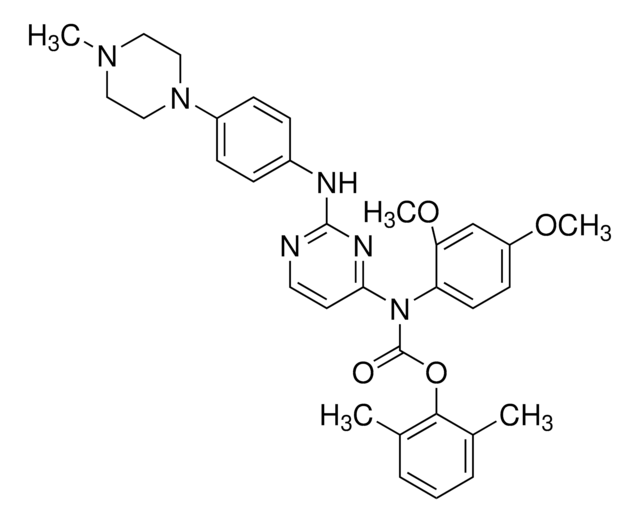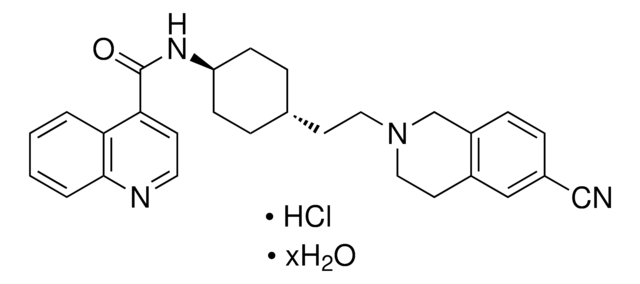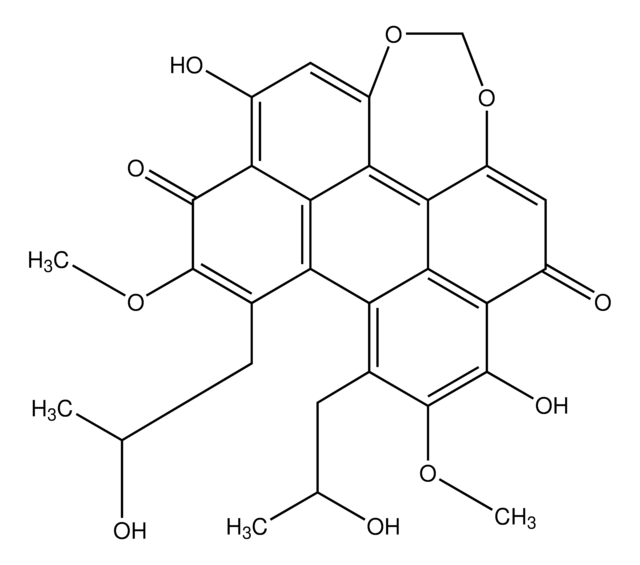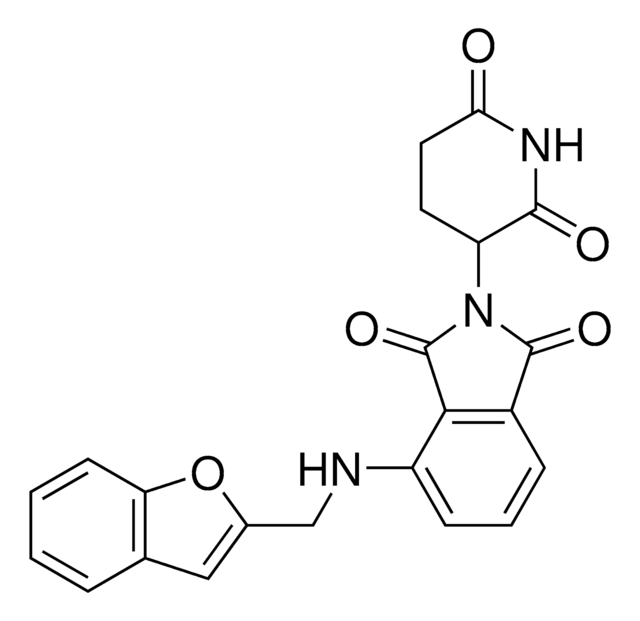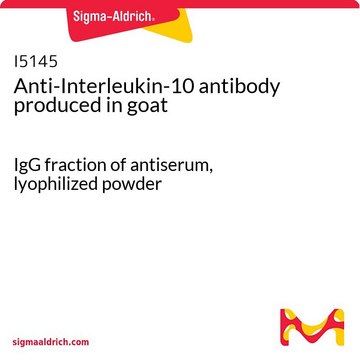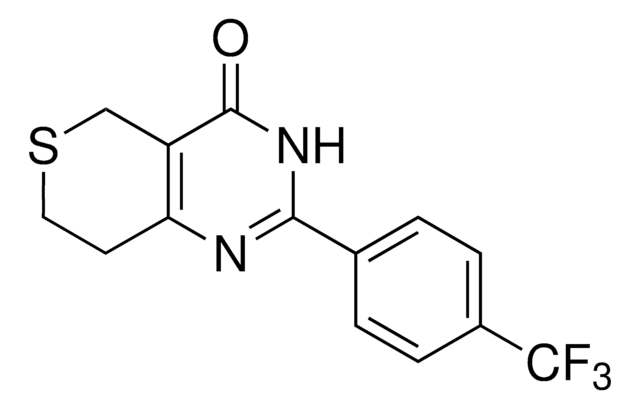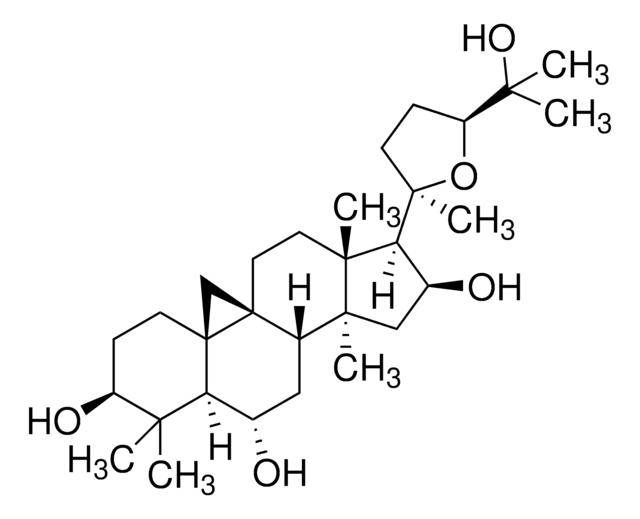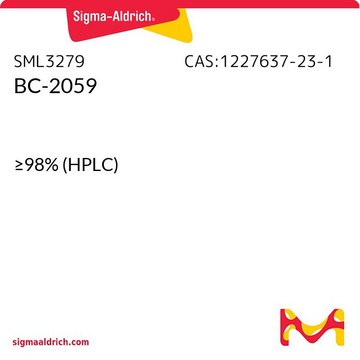B5063
BMS-193885
≥98% (HPLC)
别名:
1,4-dihydro-4-[3-[[[[3-[4-(3-methoxyphenyl)-1-piperidinyl]propyl]amino]carbonyl]amino]phenyl]-2,6-dimethyl-3,5-dimethyl ester-3,5-pyridinedicarboxylic acid
登录查看公司和协议定价
所有图片(1)
About This Item
经验公式(希尔记法):
C33H42N4O6
CAS号:
分子量:
590.71
MDL编号:
UNSPSC代码:
12352200
PubChem化学物质编号:
NACRES:
NA.77
推荐产品
质量水平
方案
≥98% (HPLC)
表单
powder
颜色
light yellow to yellow
溶解性
DMSO: >10 mg/mL
创始人
Bristol-Myers Squibb
储存温度
−20°C
SMILES字符串
COC(=O)C1=C(C)NC(C)=C(C1c2cccc(NC(=O)NCCCN3CCC(CC3)c4cccc(OC)c4)c2)C(=O)OC
InChI
1S/C33H42N4O6/c1-21-28(31(38)42-4)30(29(22(2)35-21)32(39)43-5)25-10-6-11-26(19-25)36-33(40)34-15-8-16-37-17-13-23(14-18-37)24-9-7-12-27(20-24)41-3/h6-7,9-12,19-20,23,30,35H,8,13-18H2,1-5H3,(H2,34,36,40)
InChI key
WMYSXJSJXZFODY-UHFFFAOYSA-N
生化/生理作用
BMS-193885 is a potent, selective Y1 antagonist that is active in both acute and chronic animal models of food intake.
BMS-193885 is a potent, selective Y1 antagonist that is active in both acute and chronic animal models of food intake. Although it is active in vivo, it is not orally bioavailable due to poor intestinal absorption, so it is not being pursued for pharmaceutical development. BMS-193885 has been used as a pre-clinical proof of concept tool for showing efficacy of Y1 antagonism in treating obesity.
特点和优势
This compound is featured on the Neuropeptide Y Receptors page of the Handbook of Receptor Classification and Signal Transduction. To browse other handbook pages, click here.
This compound was developed by Bristol-Myers Squibb. To browse the list of other pharma-developed compounds and Approved Drugs/Drug Candidates, click here.
警示用语:
Warning
危险声明
危险分类
Acute Tox. 4 Oral
储存分类代码
11 - Combustible Solids
WGK
WGK 3
闪点(°F)
Not applicable
闪点(°C)
Not applicable
法规信息
新产品
Shiba Yousefvand et al.
Canadian journal of physiology and pharmacology, 96(12), 1301-1307 (2018-10-17)
Neuropeptide Y (NPY) plays a mediatory role in cerebral insulin function by maintaining energy balance. The current study was designed to determine the role of insulin in food intake and its interaction with NPY receptors in 8 experiments using broiler
David Acton et al.
Cell reports, 28(3), 625-639 (2019-07-18)
Acute itch can be generated by either chemical or mechanical stimuli, which activate separate pathways in the periphery and spinal cord. While substantial progress has been made in mapping the transmission pathway for chemical itch, the central pathway for mechanical
我们的科学家团队拥有各种研究领域经验,包括生命科学、材料科学、化学合成、色谱、分析及许多其他领域.
联系技术服务部门

